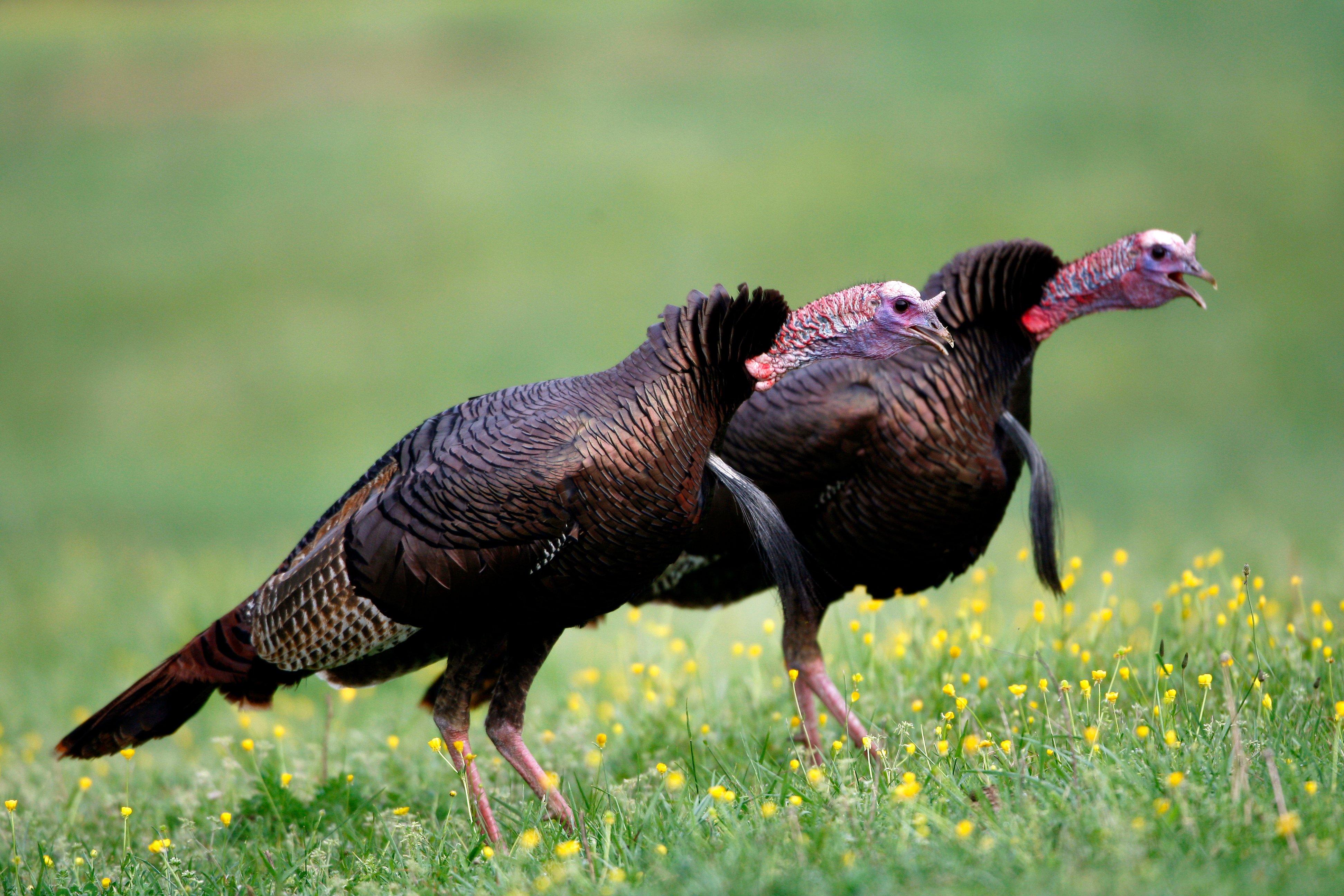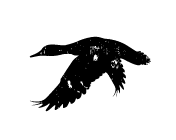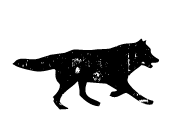Henned-up birds are frustrating Georgia hunters, but the action is red hot in other parts of the South

Turkey season is now open in every state across the South. Image by Tes Jolly
Gobbling is on a roll in Alabama. Texas birds are fired up and mixed reports are coming in from Georgia.
Alabama’s wild turkeys are well along in their springtime transition, behaving as good gobbling birds should. Early season wind and rain dampened the March 25 opener, but more recent reports find the action heating up in the Heart of Dixie.
Wildlife photographer Tes Jolly, who lives on a farm in Tuskegee, Alabama, said she and her husband, Ron, took a friend hunting for his first gobbler, and although they didn’t experience the luck they’d hoped for, they enjoyed the experience and have been hearing of much success throughout the state.
“It was a beautiful, cool, clear Alabama morning. Unfortunately, there was no gobbling within earshot all morning. Not a peep and no hen talk either. We did see a big red feral hog,” Jolly said.
But she said their lack of success seemed to be the exception rather than the rule in the state last week.
“Judging from our friends and what I’m seeing on social media, there were a lot of birds tagged last week,” she said.
She said on her farm, gobbling on the roost and right after fly-down has been fairly good.
“The flocks have dispersed from one winter group of 62 down to 24. We’re seeing one group that has two mature gobblers, 12 hens and the rest are jakes. There’s one jake who is allowed to strut near the toms. He won’t breed, but he’s getting good practice. Multiple hens leave the flock starting around 8 to 8:30 each morning. It’s egg laying time! That can make staying in the woods until lunch a good strategy. This morning at 8:15, I watched one hen lift off from the field and fly into a known nesting habitat. Two others went in different directions. Patience will pay off,” Jolly said.
Don’t Miss: Break the Turkey Gobbling Code This Spring
Kevin Matthews, Reid Duvall, and Will Dixon, all members of Turkeys For Tomorrow (TFT), a nonprofit turkey conservation group made up of avid hunters, have been hunting in South and Central Alabama and say the turkeys’ springtime processes are well underway.
Dixon said the birds have finally gotten turned on in the western part of the state.
“Typically, April 10 to April 12 is peak nesting time. The birds are gobbling great for the first hour or so on the ground, then they go quiet. They’ve been firing up hot again later in the mornings as the gobblers’ hens are leaving them. I’m starting to frequently see lone gobblers as often as gobblers still with hens.”
Matthews said he and his son in law found turkeys in the Elba area willing to play this past weekend.
“I killed one that weighed 22 pounds and had 1 3/8-inch spurs. My son in law shot one on a hunt similar to mine on property nearby. For the most part, turkeys in East Central Alabama are still bunched up, but the longbeards are gobbling fairly well,” he said.
Duvall, who hunts territory just south of Birmingham, said the turkeys he encountered were silent and stealthy. He took a nice turkey around 1 p.m. a couple days after the March 25 opener. Throughout his full morning and midday’s efforts, the bird never offered a peep.
“He did not gobble and was alone,” Duvall said, noting his hunting partner had a similar experience with a bird that same day. In his partner’s case, a lone turkey that fired off a few gobbles responded to scratching in the leaf litter, appearing at 12:30 p.m. and disappearing moments later when the hunter’s shot thoroughly pruned a 2-inch sapling but left the longbeard entirely unscathed.
Dan Braman, a TFT board member and owner of Mellon Creek Outfitters near Corpus Christi, Texas, reported finishing last week with a 100% success rate for his clients.
“The turkeys have been on fire and were working great,” Braman said. “Their numbers were extraordinarily high this season, and jakes are literally everywhere as well.”

Reports indicate that the action is heating up throughout Alabama and other parts of the Deep South. Images by On the Wildside
Jason Hardin, wild turkey program leader for Texas Parks & Wildlife, said hunters are reporting a mix of gobblers with hens, roaming groups of jakes readily coming to calls, and the occasional gobbler running into calling hunters in a more textbook fashion.
Don’t Miss: How Prescribed Fire Can Reduce Turkey Predation
Realtree’s David Blanton said he’s getting reports that Georgia’s March 30th private land opening day was on fire.
“But since then, it’s been really slow,” Blanton said. “The birds are henned up in a lot of places and the gobbling has been really slow.”
Realtree Road Trips Producer Bryan Brown says the gobbling in Georgia is hit or miss based mostly on the weather conditions, but gobblers have been working right for the most part since opening day.
“Tyler and I had a quick hunt in Harris County Tuesday morning after the storm. We got close to a group of gobblers right off the roost. They gobbled good but steadily worked away from us. We didn’t have time to make a big loop around them. Other reports I’ve gotten from the last two days is very little gobbling after they fly down,” Brown said.
Realtree’s funny man Michael Pitts said he hasn't had much luck in Georgia.
“On opening day, the birds were tight-lipped. I didn’t hear a gobble all day long. This is typical on the acreage I hunt and it can be very frustrating at times. On a good note, I did see a decent amount of turkey sign while walking the woods. I hunted again the following Tuesday morning and only heard one bird on the roost, and he only gobbled one time. I think the bird numbers are a little down on the property I hunt here in Georgia. I'm not seeing a lot of hens this year and that concerns me. It seems we had a poor hatch last year as I am not seeing as many jakes as I typically do. I’ve been taking a beating here locally this year, but this land typically gets better as season goes on, so we will see. Tomorrow is a new day, and I will be there at daylight to see what happens.”
Adam Butler, wild turkey program coordinator for the Mississippi Department of Wildlife, Fisheries & Parks, said, “The weather has been pleasant and mild so far with lots of bluebird days. In a normal year, gobbling activity would be peaking about now, but most reports are still hit or miss, with very little gobbling on the ground later in the morning. Flocks seem to be breaking up, though, and I do expect activity to get better. Nearly everyone I talk to is happy with the number of birds they’re seeing, however.”
We haven’t received a report from Florida this week, but those who want to keep up with Florida’s harvest numbers this season can check out THE HUNTER’S TOOLBOX, which is updated by the Florida Fish and Wildlife Conservation Commission. It features harvest reports by map, land type and by day.
North Carolina, Kentucky, Louisiana, and Tennessee all opened this past weekend (youth-only seasons in some cases) and we’ll update on the gobbler action and success rate in these states in our next Strut Report.



















































